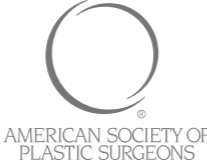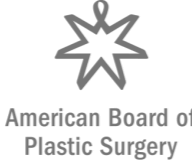Shop SkinBetter Products Here
BOSTON PLASTIC SURGERY
Shop SkinBetter Products Here
BOSTON PLASTIC SURGERY





At Clareo Plastic Surgery in Boston, we want to help make your patient journey with us as smooth as possible. As part of this, we collaborate with multiple partners to help our patients with their financing needs. Click here for more information.
Slim 360 is Clareo Plastic Surgery’s safe and effective medication-based weight loss program. We offer both Semaglutide and Tirzepatide, medications that slow digestion as well as dial back appetite and food craving.
Clareao Connect is Clareo Plastic Surgery’s prestigious rewards program. With Clareo Connect, simply download the app, to sign up for exclusive rewards!
The Clareo Club Membership program offers an unparalleled, meticulously curated tiered system. Each tier within the Clareo Club is designed to cater to your aesthetic desires to elevate your skincare routine, get exclusive offers on Fillers and Neurotoxins and much more.
At Clareo Plastic Surgery, your breast augmentation treatment plan is personalized to meet your unique needs. As a result, the cost of breast augmentation in Boston can vary based on the specific techniques and methods used. On average, the procedure starts at $9,500, but individual prices may differ.
During your consultation, you’ll receive a detailed breakdown of the costs associated with your procedure. Our knowledgeable medical staff will also provide you with information on payment options and financing plans to make the process as convenient as possible.
Recovery from breast augmentation is a gradual process, with most women returning to their normal activities within 8 to 10 weeks after surgery. While you will be able to resume various activities as you heal, full recovery typically takes this period of time. Since the procedure is performed under general anesthesia, you’ll need someone to drive you home and provide assistance for about 24 hours until the effects of the sedatives wear off.
Breast augmentation results typically last between 10 to 15 years or more for most women. They are not considered permanent and may need to be replaced after this time. In contrast, fat transfer offers a more permanent solution, as it uses your own tissue. However, it’s important to note that natural aging effects, such as skin sagging, may still occur over time.
After breast augmentation surgery, you’ll notice an immediate increase in breast size. However, it can take between six months to a year for your breasts to fully settle into their final position. Initially, your breasts may feel firmer and appear differently as your body adjusts to the implants.
The term “dropping and fluffing” describes this adjustment period, where the implants gradually shift from a higher position to a more natural placement. This process involves the stretching of the skin and the relaxation of the muscles. Typically, dropping and fluffing begins around six weeks post-surgery, with the implants generally being about 80% settled by three months.
This procedure is considered very safe and is routinely performed. Possible risks include those that might occur with any surgery such as swelling, infection, or temporary loss of sensation. Seeing a certified plastic surgeon significantly reduces the chances of any possible adverse outcomes.
Most patients resume most day-to-day activities within about 1-2 weeks after surgery. However, heavy cardio and upper body workouts should be avoided for four weeks.
Scars from a breast lift will appear raised and red initially after surgery, but they should smooth out and fade to a color very close to the surrounding skin. Because of where incisions are made, clothing, including swimwear, will always cover your breast lift scars.
The cost of breast lift varies and is dependent on facility and technique, including any breast implants or liposuction before fat transfer. Discuss all costs with our staff during your consultation.
Yes, a breast reduction typically alleviates upper back pain as well as bra strap grooving, and rashes beneath the breasts. Sometimes patients have arm numbness or neck pain due to their large breasts which also can be improved with breast reduction surgery.
Yes, most, but not all, women who are considering a breast reduction also have breast droop, called “ptosis.” In these cases, the breasts are lifted along with being reduced. If there is no breast droop, the youthful shape is maintained with breast reduction.
Breast reduction is performed as an outpatient procedure, allowing you to return home on the same day as your surgery. Most patients can resume normal activities within a few days. Those who work outside the home and have desk jobs often return to work within 7 10 to 104 days. However, it is important to avoid exercise and strenuous activities for four to six weeks following the procedure to ensure optimal healing.
A breast revision refers to any cosmetic breast surgery undertaken by patients who have previously undergone aesthetic breast procedures. This is commonly performed for individuals who have had breast implant surgery and are seeking changes. Reasons for a breast revision may include adjusting the implant size, lifting the breasts (often after childbirth), or addressing issues such as capsular contracture, implant malposition, or implant leaks.
Transferred fat, like all fat in the body, can experience volume changes with fluctuations in body weight. However, noticeable changes in breast size typically occur only with significant weight changes.
You might be a candidate for a brachioplasty if you have excess skin in your upper arms that you are willing to exchange for a scar to achieve a more toned appearance. If you also have extra fat in the upper arms but maintain good skin elasticity, you might be better suited for arm liposuction instead. During your consultation, we will evaluate your specific needs and discuss the most suitable options for you.
After a Brazilian butt lift, the transferred fat will react to weight changes in the same manner as your existing fat cells. Significant weight fluctuations can impact the results of your procedure.
During the procedure itself, discomfort is minimal to none. Post-operative pain can vary, generally ranging from mild to moderate. Your surgeon may prescribe pain medication if needed, though for smaller areas like the chin, over-the-counter pain relievers are often sufficient.
Liposuction carries several risks, including scarring, infection, seroma (fluid accumulation), rippling, and blood pooling under the skin. When general anesthesia is used, there are potential risks such as pulmonary or respiratory complications. However, with our board-certified surgeon and experienced anesthesiologists, serious complications are extremely rare.
Depending on what procedures are included in your Mommy Makeover, it can take anywhere from 4-6 weeks to recover fully. Usually, basic daily tasks are manageable after about one week.
Like any surgical procedure, a Mommy Makeover carries certain risks, though serious complications are uncommon. Potential side effects include bleeding, implant leakage or capsular contracture, infection, loss of nipple sensation, poor incision healing, and deep vein thrombosis.
Scarring is a trade-off for the numerous benefits of a tummy tuck. The abdominoplasty scar, located in the lower abdomen, is designed to be discreet and typically covered by most clothing. The scar’s length depends on the amount of excess skin removed. A full abdominoplasty includes a scar around the belly button, whereas a mini tummy tuck does not require this additional incision. We employ precision surgical techniques to minimize scarring and will provide you with post-surgery scar management recommendations. Over time, these scars usually become inconspicuous and are generally well-accepted by patients.
A typical tummy tuck (abdominoplasty) generally takes about three to four hours to complete. The duration may vary based on the complexity of the procedure and any additional treatments performed. During your consultation, your surgeon will provide a more precise estimate of the time required for your specific surgery and address any concerns you may have.
Blepharoplasty is a cosmetic procedure designed to rejuvenate the eyelids. This surgery can address the upper eyelids, lower eyelids, or both. The process typically involves removing excess skin, eliminating or repositioning fat, and often tightening the muscles of the lower eyelid. Whether you’re looking to refresh tired eyes or improve your overall eye area, blepharoplasty can help achieve a more youthful and vibrant appearance.
Patients should avoid strenuous activity for three weeks after surgery. Bruising generally lasts seven to 10 days, and patients often return to non-strenuous work activities seven to 10 days after a blepharoplasty procedure.
To be considered a candidate for a facelift, you should be in good overall health with well-managed medical conditions such as high blood pressure and diabetes. It’s important to be at a healthy weight and maintain a healthy lifestyle, including a consistent skincare regimen with moisturizer and sunscreen. Non-smokers are ideal candidates, but if you do smoke, you must be nicotine-free for at least 30 days prior to surgery. Additionally, if you are on blood thinners, you will need to follow your physician’s instructions to pause them around the time of your procedure.
Immediately following your facelift surgery, our post-operative team will provide care at the surgery center. You will need to be discharged into the care of a family member or trusted friend and have someone stay with you for at least the first evening. The day after your surgery, your Clareo team will perform a follow-up visit to check on your progress and change your bandages. Sutures are typically removed five to seven days post-surgery. Expect initial swelling and some bruising, which is common. By around 10 days, much of the swelling will subside and bruising will significantly diminish.
Healing continues beyond the initial recovery period, with subtle swelling usually resolving within the first two weeks and complete healing occurring over the next three months. Scarring will gradually improve and fade over the first year.
Rhinoplasty, or nose reshaping, colloquially called a nose job, is a procedure that improves the appearance of the bridge as well as the tip of the nose. Rhinoplasty can also repair impaired breathing or a deviated septum.
After rhinoplasty, which often involves breaking and setting the nasal bones, you can expect bruising for about seven to 10 days. Most patients can return to non-strenuous work roughly one week after the procedure. However, it’s important to avoid strenuous activities for four weeks to ensure proper healing. Additionally, you should protect your nose from any impact for up to three months following surgery to avoid complications and ensure the best results.
Male breast reduction treats gynecomastia, enlarged male breast tissue. Gynecomastia can be caused by certain drugs or medications such as anabolic steroids and marijuana, endocrinology disorders, or diseases of the breast including cancer; however, most gynecomastia is physiologic, meaning that it is not secondary to an abnormal stimulation or disease process.
The tissues are permanently removed and the breast does not gain excess tissue unless stimulated by drugs or disease; the chest and breast area will also enlarge with weight gain.
Shop SkinBetter Products Here
BOSTON PLASTIC SURGERY
